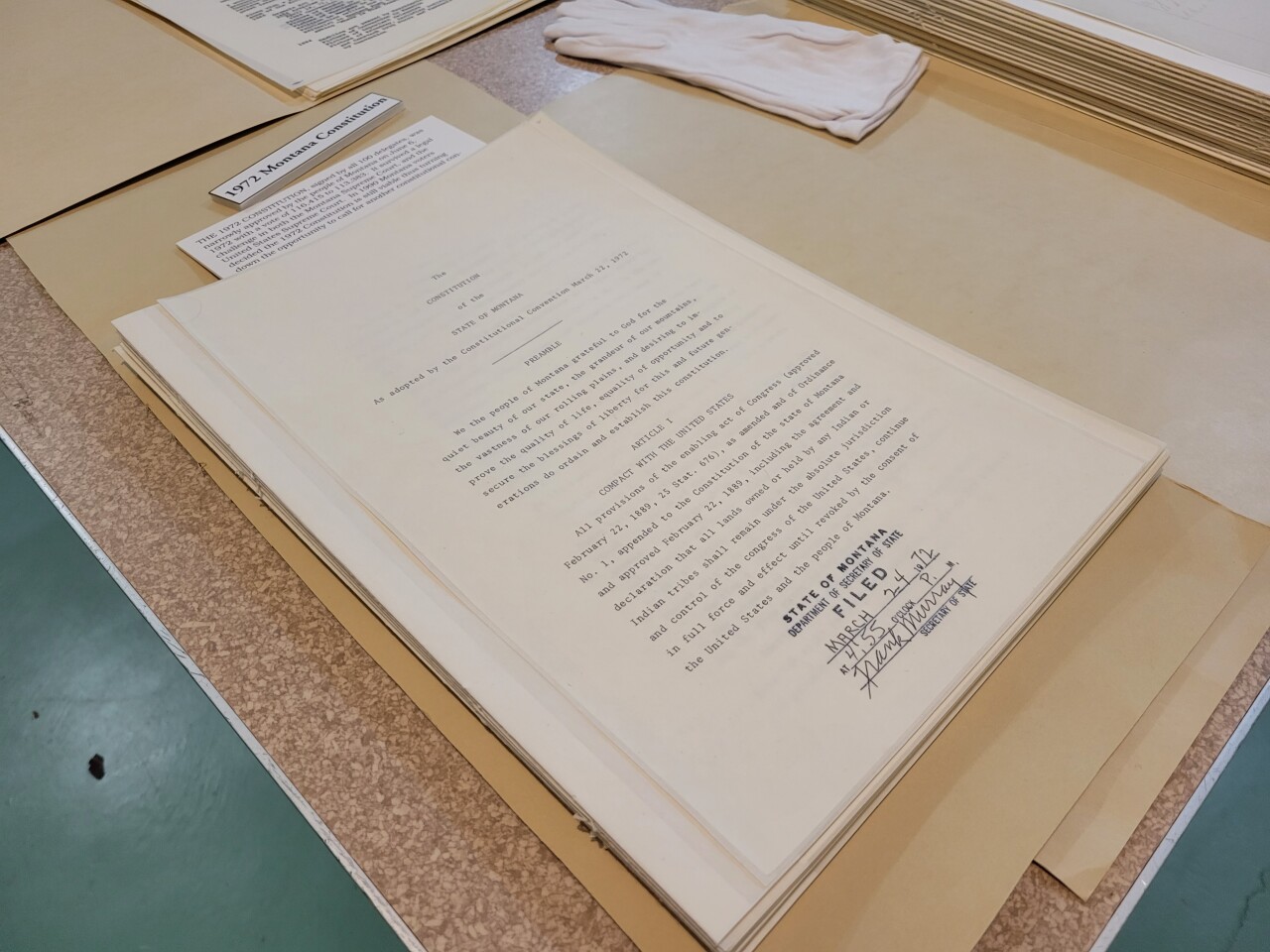HELENA — A half-century ago, 100 Montana citizens came together to write a new constitution for the state. While that document may not be on public display, it can be easily accessed by any member of the public.
Deep within the halls of the Montana Historical Society building in Helena is the State Archives. There lives not only the 1972 Constitution but also the 1889 Constitution and the draft 1884 Constitution that was never used because of political reasons. Congressional leadership at the time worried that if they admitted Montana as a state it would turn the balance of power from the Republicans to the Democrats. not wanting to admit Montana as a state at the time.
As for the reason the constitutions aren’t on display, well it’s less romantic than there being some secret message or a map on the back to the alleged lost treasure of Henry Plumber. MTN checked. Rather, it’s simply to protect the document from deteriorating.

“If you’ve ever been to the national archives in Washington D.C. and seen the Declaration of Independence and the fact that that center section is just about faded completely out, that’s from its exposure to natural light and artificial light,” State Archivist Rich Aarstad told MTN.
The Montana Historical Society was designated the State Archives in 1969.
“Eleven years later the Secretary of State’s Office, who had been one responsible for keeping the original constitutions, transferred those to the custody of the Montana Historical Society because we provide a stable environment for those documents,” Aarstad noted.
Montana’s constitutions, along with the thousands of linear feet of other historic documents in the state’s care, are stored in a light, temperature and humidity-controlled room. They’re cataloged in acid-free folders and boxes to protect them from any other potential damage.

Aarstad says every document the State Archives receives is treated as if it’s already in a state of decay.
“It’s not to keep it from the public or anything like that, it’s just to make it last as long as possible,” he explained.
Just because great care is taken to preserve such artifacts, doesn’t mean they are locked away. Every document in the care of the State Archives is a public record. That means that anyone, be they a senator or a student, can request to see documents like the original constitution. Montana Historical Society staff are more than happy to accommodate. All a person has to do is make arrangements with the reference room staff.
“Come here, this belongs to the people of Montana. It’s yours,” beamed Aarstad. “It’s a privilege for me as a Montanan, to grow up in Montana, to be able to come here and spend a career working here for Montana and preserve the history of our state. It’s incredible.”
Aarstad says being able to show people the original documents, not a copy, is one of the best parts of his job.
People can even request to see President Abraham Lincoln's decree appointing Sidney Edgerton as the first territorial governor of Montana, or the first known written request to Montana seeking historical documents, which came from prominent author Mark Twain.
Twain’s letter in 1870 inquired into information about the hanging of Jack Slade on March 10, 1864, by vigilantes. The author had met Slade before Slade had made his way to Montana. In the letter, he describes Slade as a “fragment of the original devil” and sought newspaper clippings about that time in Montana history. Twain was working on his book “Roughing It” and wanted to include Slade so that Twain might “rescue my late friend Slade from oblivion & set a sympathetic public to weeping for him."

Montana is the "Treasure State." While the state motto is “Oro y Plata” which is Gold and Silver in Spanish, the true treasures of Big Sky Country go far beyond precious metals. The countless artifacts at the Montana Historical Society belong to all Montanans. To see them, all you have to do is ask.




